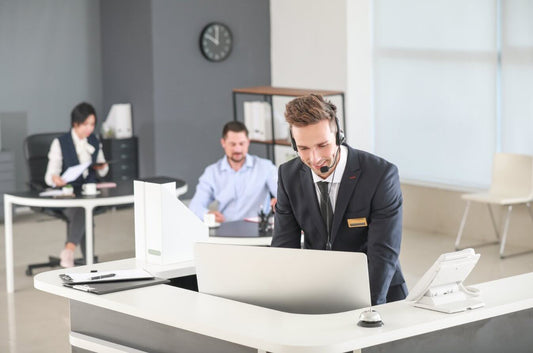
All about IoT platforms
Contents
- Introduction
- What is an IoT platform?
- What are the advantages of using IoT platforms in the industrial context?
- Criteria for choosing your IoT platform
- Connectivity management using IoT sensors
- Discover our bonus recommendation
Introduction
Today, there are numerous solutions for players in the industrial sector who would like to digitalize their production or activity management processes to take the big step into industry 4.0 : among these we find IoT platforms. What are their characteristics ? How to understand their added value? Discover in this article the main information you need to know about this digital tool.
What is an IoT platform?
An IoT ( Internet of Things ) platform is defined as a centralized system that allows you to control a fleet of connected objects . It thus becomes a control tower, connecting different items together: objects and sensors, networks, data, and software or applications (accessible via APIs, Application Programming Interface ). It also presents a user interface , most often on a web console, but also on a tablet or smartphone. This guarantees humans unlimited access to information, which constitutes a valuable asset for them.
Its first added value lies in the fact that it must make it possible to manage on a single interface the sensors and connected objects which are scattered throughout the workspaces, as well as the data flows . The set of services and tools deployed by an IoT platform therefore offers it the possibility of collecting, processing, storing, analyzing and exploiting all the data generated by connected objects and systems. It will finally be able to redirect them if necessary to third-party applications.
Because it must manage a large amount of data from multiple sources, an IoT platform is generally hosted in the cloud.
What are the advantages of using IoT platforms in the industrial context?
First of all, opting for an IoT platform significantly reduces costs, since it already centralizes an entire system management process. Many attractively priced offers now exist in this growing market.
It also makes it possible to optimize processes and flows within industries : it is possible to react more quickly thanks to the information provided in real time. This leads to better visibility of the production chain and its value, and helps to reduce machine problems or anomalies.
The IoT platform also collects the data, before organizing and securing its transmission to the information system . It thus plays an interface role, but also protection and maintenance in the face of the sensitivity of connected objects: supervision of the communication state of items and their autonomy, encryption, detection of possible cyberattacks, automatic recording of new equipment… The possibilities it offers are numerous.
Its use therefore takes on its full meaning in an industrial environment, since it proves valuable for gaining operational performance and improving product quality . The use of the data collected by the IoT platform is very interesting in the context of forecasts, strategies, reflections or decision-making, for example on the exploration of other production scenarios or on the maintenance of equipment.

Criteria for choosing your IoT platform
It is not always easy to understand which IoT platform is best suited to your situation. You can already base yourself on the maturity of the project, as well as the different use cases available. The second step will be to study the possibilities available to you according to the three criteria that follow.
In addition, it is crucial to take into account compatibility with existing infrastructures, the capacity for scalability to support the future growth of your business, integration with Business Intelligence tools such as Power BI and finally, data security to protect your sensitive information.
Connectivity management using IoT sensors
The effectiveness of an IoT platform is first measured by its ability to connect and manage a set of heterogeneous devices on a single interface . It must also take into account the growing need to constantly create new interactions between objects, on the principle of interoperability. Finally, it is important that it can offer and support a wide selection of communications protocols.
Data visualization using an IoT Platform
Another important point for a good IoT platform is reflected in the quality of its visualization interfaces . Whether it is the finesse of the algorithms allowing in-depth data analysis, or the presence of customizable dashboards, this aspect is fundamental to the user experience. The value of this solution actually lies in its ability to capture raw data, sort it and transcribe it into intelligent information.
For example, using an IoT platform, we can track the OEE (Overall Equipement Effectiveness) or even monitor energy performance .

The overall security of IoT objects
An IoT platform must finally provide guarantees of security and confidentiality regarding data, at all stages of the process . Objects and environments, whether hardware or virtual, must be protected to avoid any risk of hacking and the leak of potentially sensitive data.
Discover our bonus recommendation
Finally, we advise you to opt for an IoT platform with a high degree of agility . As technology evolves ever more rapidly, it is essential that your solution can adapt while maintaining its power and value in use . If you are hesitating between several IoT platforms for your business, you can contact our teams who can guide you in your choice.
Discover the digital factory selection of the best IoT platforms for industry 4.0.



